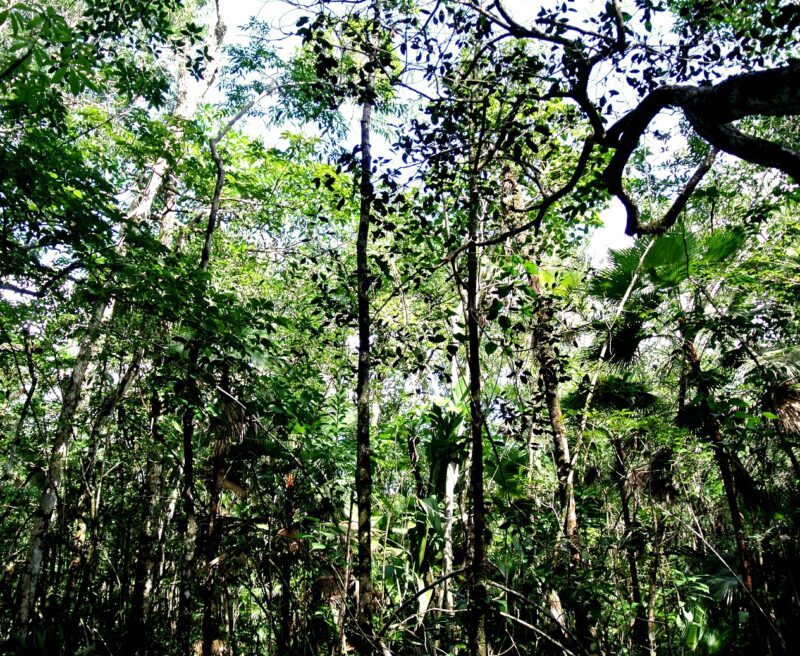Ornate Hawk-eagle
Species Data
Class: Aves
Order: Accipitriformes
Family: Accipitridae
Scientific Name: Spizaetus ornatus
IUCN Red List status: Near Threatened
Description
The Ornate Hawk-eagle is an uncommon and threatened bird of prey found in rainforests and montane forests throughout Central America, but with a more fragmented range in South America.
Formerly known as the Crested Hawk-eagle, like all eagles and many other diurnal birds of prey it falls into the family Accipitridae.
It can be distinguished by its striking plumage of brown wings, a speckled white underbelly, chestnut strips around its neck, topped off by a black crown. Colouration differs markedly between adults and juveniles, with the latter mostly white alongside a mix of brown and black.
Behaviour
With an impressive wingspan of 3-4 feet, the Ornate Hawk-eagle is a predator of the forest. They soar earlier than other raptors, catching prey almost twice their own weight either in trees or on the ground. Their diet mostly features birds such as parrots, but also small mammals (including squirrels and bats), and reptiles (including lizards and snakes).
The courtship period of Ornate Hawk-eagles is relatively long, spanning one to two months of aerial displays and calls. Once settled, parents build together a nest – diameter averages at 1.7m – in the forest canopy, a location that grants the eagle pair a clear view of the forest below. In the early nesting period, the female does the majority of the incubation while the male hunts.
This is a species with a relatively low reproductive output, with the laying of a single egg followed by long dependency periods. Egg laying tends to happen during the dry season, so that offspring can fledge during the monsoon season and benefit from the higher density of prey that accompanies the rains.


Habitat
The Ornate Hawk-eagle’s range covers most of the Neotropics – with a fairly consistent range from southern Mexico to Panama. In South America its range is more scattered, with populations tending to be more established in the Amazon basin.
The species’ primary habitat is wet primary rainforest and lowlands, but it can also be found in middle elevations of montane forest and the pine forests of countries such as Mexico.
Threats and Conservation
Although generally widespread throughout its range, Ornate Hawk-eagle were uplisted to Near Threatened by the IUCN in 2012, due to the threats facing large swathes of their remaining habitats.
According to research based on Amazon deforestation models, America-wide populations of the species will decline by 25-30% over the next three generations, fuelled by the expected loss of 22-40% of suitable habitat. Deforestation remains the chief threat to these eagles, coupled with hunting driven by perceptions of the species as a threat to livestock. The issues are compounded by the eagle’s low reproductive output, which slows down population recovery.
In 2021 and with support from World Land Trust’s Big Match Fortnight campaign, our in-country partner FUNDAECO will be tripling the size of a protected area – the Laguna Grande Reserve – that safeguards Ornate Hawk-eagle habitat.
References
Clark, W. S., & Schmitt, N. J. (2017). Raptors of Mexico and Central America. Princeton University Press.
Klein, B.C., Harper, L.H., Bierregaard, R.O. and Powell, G.V., 1988. The nesting and feeding behaviour of the ornate hawk-eagle near Manaus, Brazil. Condor, pp.239-241.
Phillips, R.A. and Hatten, C.J., 2013. Nest observations on the Ornate Hawk-Eagle (Spizaetus ornatus) in Belize, Central America. Boletin SAO, 22.
Robinson, S.K., 1994. Habitat selection and foraging ecology of raptors in Amazonian Peru. Biotropica, pp.443-458.
